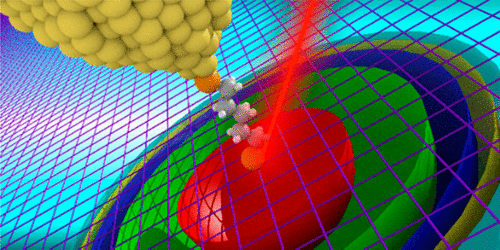A single molecule photodiode

Dr Andrea Vezzoli, Professor Richard Nichols and Professor Simon Higgins, along with colleagues at the University of Bristol, have published a paper showing that it is possible to achieve the feat of measuring the electrical conductance of even a single molecule which is wired between a pair of metal contacts acting as molecular level crocodile clips. Such single molecule electrical measurements have revolutionised our understanding of how charge flows through individual molecules and biomolecules in a wide variety of environments and are important for applications ranging from energy technology to DNA sequencing. Up until recently such measurements have only been possible with metal contacts but lately they have managed to extend this to semiconductors. This advance is important since future applications of molecular electronics will rely on integrating molecules alongside conventional semiconductor electronic technologies.
In their recent publication in the American Chemistry Society journal Nano Letters [1] they have shown that it is not only possible to form single molecule devices contacted to the semiconductor gallium arsenide, but that such devices show a strong photocurrent response. The illustration above shows the illuminated single molecule device in which the molecule bridges a nanometre scale gap between the semiconductor contact and an ultra-sharp gold tip which forms the second contact.The hemispheres drawn into the gallium arsenide substrate represent the space charge layer (SCL) from which the charge carriers are collected. The device requires an SCL of only a few nanometres to achieve good photodiode functionality, thus paving the way to a reduction in size of photodiodes and photodetector arrays. The response of the single molecule device is therefore controlled by the combined properties of the semiconductor and the molecular wire, thereby significantly extending of the single-molecule electronics “tool-box”.
[1] DOI: 10.1021/acs.nanolett.7b02762. Nano Lett., 2017, 17 (11), pp 6702–6707